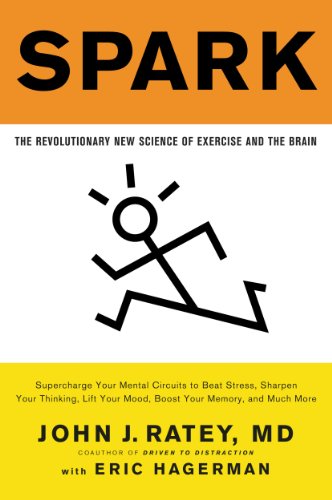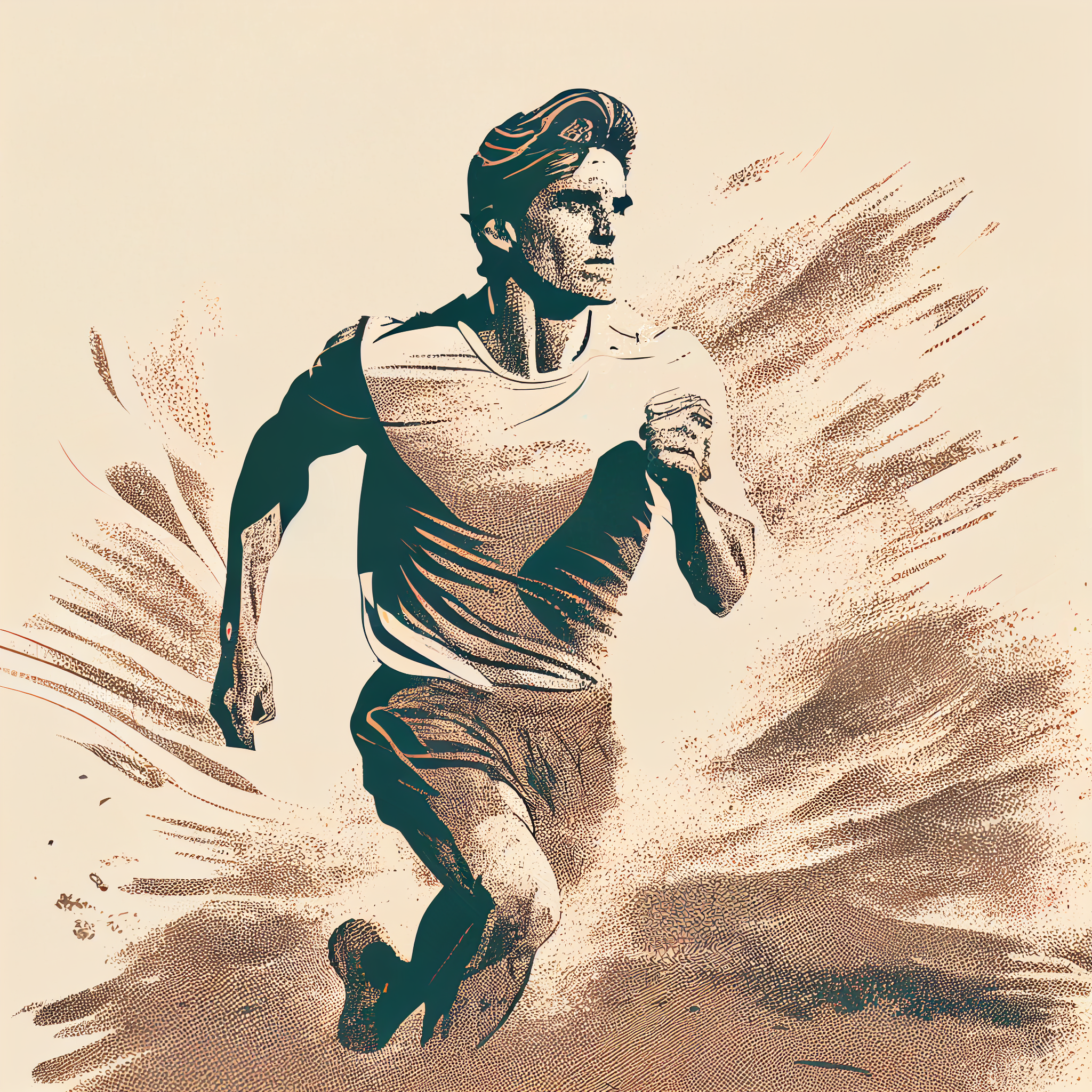By Dr. John J. Ratey with Eric Hagerman
Introduction: Why Exercise Is Not Just for the Body
In Spark, Harvard psychiatrist Dr. John J. Ratey makes a powerful case that exercise is the single most powerful tool we have to optimize brain function. While most of us associate physical activity with six-pack abs or cardiovascular health, Spark shifts the focus: exercise is a cognitive and emotional game-changer.
This book dives deep into neuroscience and practical case studies to show that exercise improves learning, reduces anxiety, enhances mood, wards off addiction, and protects the brain from aging and neurodegeneration. It’s not a supplement to brain health—it’s central to it.
The Core Message: Movement Fuels the Mind
Dr. Ratey’s main thesis is that exercise is like Miracle-Gro for the brain. Regular physical activity doesn’t just make us fitter—it:
- Increases cognitive performance
- Enhances mood and emotional resilience
- Boosts memory and learning
- Helps manage stress and anxiety
- Slows down age-related cognitive decline
This isn’t about running marathons. Even moderate, consistent movement (like brisk walking or 20 minutes of aerobics) can dramatically change how your brain works.
Chapter Summaries & Key Takeaways
1. Learning: How Exercise Boosts Brainpower
In Naperville, Illinois, a public school revolutionized its academic results—not with new textbooks, but with morning PE classes. Kids who exercised before class scored among the highest in the world in math and science.
Why?
- Exercise increases BDNF (Brain-Derived Neurotrophic Factor), often called “Miracle-Gro” for the brain.
- BDNF helps neurons grow, connect, and learn more effectively.
- Exercise improves attention, alertness, and motivation—critical ingredients for effective learning.
💡 Takeaway: Want to learn faster and remember more? Move your body first.
2. Stress: Rewiring the Brain’s Response to Pressure
Stress shrinks the brain—literally. Chronic stress floods your body with cortisol, damaging neurons in the hippocampus, the brain’s memory center.
Exercise provides a biological buffer:
- Regulates cortisol levels
- Boosts resilience to stress
- Enhances recovery from stressful events
Dr. Ratey shows that regular physical activity recalibrates your nervous system so you’re less reactive and more adaptive.
💡 Takeaway: Feeling overwhelmed? A run might calm you more effectively than meditation.
3. Anxiety: Movement as Medicine
Anxiety is a chemical imbalance of fear and tension. Instead of—or alongside—prescription medication, Ratey argues for sweat therapy:
- Exercise elevates GABA and serotonin, calming brain activity.
- It diverts attention away from internal worry loops.
- It mimics the physical symptoms of anxiety (elevated heart rate, breathing), helping to reduce the fear associated with them.
Exercise also acts as exposure therapy, training the brain to tolerate physical sensations of panic without overreacting.
💡 Takeaway: Exercise doesn’t just reduce anxiety—it retrains your brain’s fear response.
4. Depression: A Natural Antidepressant
Exercise is as effective as antidepressants—sometimes more so. In head-to-head studies, groups that exercised regularly showed equal or better improvements than those taking medication.
Here’s why:
- Exercise boosts dopamine, serotonin, and norepinephrine—mood-elevating neurotransmitters.
- It promotes new cell growth in the hippocampus (which shrinks in depression).
- It provides a sense of agency, achievement, and structure—key to lifting depressive fog.
💡 Takeaway: Moving your body can shift your mind—especially when you feel stuck.
5. Attention Deficit (ADHD): Focus through Fitness
ADHD isn’t a lack of attention—it’s an inability to regulate it. Dr. Ratey, who has ADHD himself, argues that exercise is the most powerful non-pharmaceutical intervention:
- Increases dopamine and norepinephrine, the same neurotransmitters targeted by ADHD medications like Ritalin.
- Improves executive function, working memory, and impulse control.
- Reduces restlessness and fidgeting.
💡 Takeaway: For kids and adults with ADHD, exercise is not optional—it’s essential.
6. Addiction: Rewriting the Brain’s Reward System
Addiction hijacks the brain’s dopamine system. Exercise can help reset the reward circuitry and:
- Provide healthy dopamine hits
- Reduce cravings and withdrawal symptoms
- Build new neural pathways tied to reward and satisfaction
Dr. Ratey showcases how exercise has been used in rehab centers, prisons, and recovery programs to aid long-term healing.
💡 Takeaway: Sweat is a natural high—and a powerful way to heal addiction.
7. Hormonal Changes (Menopause and PMS)
Women experience major shifts in hormone levels that affect mood, energy, and cognition. Exercise:
- Balances estrogen and progesterone
- Reduces hot flashes, irritability, and mood swings
- Supports bone density and metabolic health
💡 Takeaway: For women navigating hormonal transitions, exercise can be a stabilizing force.
8. Aging and Alzheimer’s: Protecting the Brain’s Future
Cognitive decline is not inevitable. Dr. Ratey presents compelling evidence that exercise prevents, delays, and even reverses brain aging:
- Increases hippocampal volume (critical for memory)
- Reduces risk of Alzheimer’s and dementia
- Enhances executive function and attention span
Even starting in your 60s or 70s can provide dramatic cognitive benefits.
💡 Takeaway: The best brain insurance policy? A pair of walking shoes.
The Science Behind the Sweat
Dr. Ratey backs up every chapter with neuroscience:
- Neurotransmitters: Dopamine, serotonin, norepinephrine, and GABA—all modulated by exercise.
- Neuroplasticity: The brain’s ability to adapt and rewire itself—supercharged by movement.
- Neurogenesis: The birth of new brain cells, stimulated by aerobic activity.
He argues that exercise transforms the brain structurally and functionally—like installing a faster processor and updating your software, simultaneously.
Practical Recommendations
Here’s how to apply Spark to your life:
- Aim for 30–60 minutes of aerobic activity 4–5 times per week
- Mix cardio with coordination-based exercises (e.g., dance, tennis) for cognitive benefits
- Exercise before mentally demanding tasks to boost attention and learning
- Walk during breaks instead of scrolling
- Use exercise as your first response to stress or emotional turbulence
You don’t need to be an athlete. You just need to move—consistently and intentionally.
Conclusion: A Revolution in Motion
Spark is a powerful wake-up call: exercise isn’t just something you do for your body. It’s the most effective tool you have to transform your mind. Dr. Ratey blends compelling science with practical storytelling, showing that from the classroom to the boardroom to the retirement home, movement is medicine.
If we treated physical activity as a first-line treatment for mental and cognitive challenges, we could change the world—one step, one breath, one heartbeat at a time.

Spark: The Revolutionary New Science of Exercise and the Brain
John J. Ratey MD, Eric Hagerman



